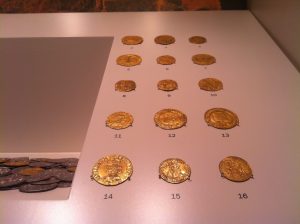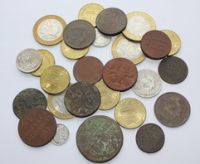general any antiquities
Ancient coins
 1. Old coins of Russia – gold and silver coins of Prince Vladimir
1. Old coins of Russia – gold and silver coins of Prince Vladimir
These were the first coins minted in Kievan Rus at the end of the 10th century, then at the beginning of the 11th century, they were issued in small quantities and not for long, so they didn’t have much influence on monetary circulation but represent a peculiar group of cultural monuments of Ancient Russia.
Under Prince Vladimir Svyatoslavovich in 988, Christianity became the official religion in Russia. In the cities, the oldest of which were Kiev, Novgorod, Ladoga, Smolensk, Moore, crafts and trade with the southern and western Slavs, the peoples of other countries were actively developed. Continue reading
Celtic Coins (III-I century BC)
 The name “Celts” was first mentioned by the Greek historian Herodotus (Greek “keltoi” means “brave”). At one time, the Celts were scattered throughout Northern Europe, although it was never a question of any kind of Celtic public education, but at most temporary alliances of individual tribes to achieve certain goals. Continue reading
The name “Celts” was first mentioned by the Greek historian Herodotus (Greek “keltoi” means “brave”). At one time, the Celts were scattered throughout Northern Europe, although it was never a question of any kind of Celtic public education, but at most temporary alliances of individual tribes to achieve certain goals. Continue reading
Yuri Pokras on how the Violiti Internet auction works
 We talk about the largest Internet site for the sale of antiquities in the post-Soviet space with the famous Kiev collector, Violiti website administrator Yuri Pokrass.
We talk about the largest Internet site for the sale of antiquities in the post-Soviet space with the famous Kiev collector, Violiti website administrator Yuri Pokrass.
– How many years has “Violiti”?
– This year the forum itself turns 10 years old. Initially, it was created as a club for active recreation and metal search and was called “Treasure Seeker Violiti”. Over time, people began to sell and buy something on this resource, a market was formed – at first absolutely chaotic and unprofessional. As in a regular forum, it was possible to set up an item, offered a price for it, and bargaining began. Gradually, there was a large number of lovers of antiquity who shared their knowledge. They were elected experts of the resource, appeared control and rather tough moderation in order to prevent incorrect communication and sale of fakes. Continue reading




